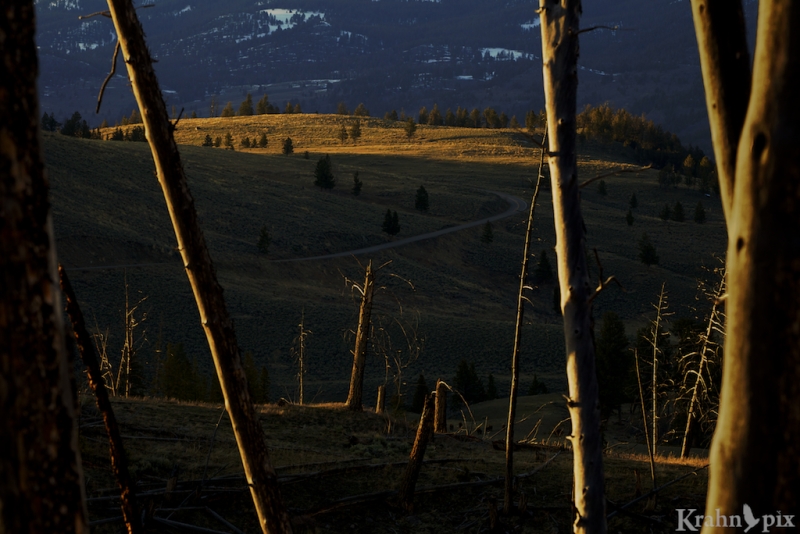
I was fascinated by the swaths of light that were hitting parts of the landscape around me. The view from between the burned and weathered trees made it better.
Fire seems like such a cruel end to a forest – turning beauty into charred remains.
We got closer to fires than we’d planned when we visited Yellowstone for the first time in 1988. We knew there were forest fires before we left, but didn’t fully appreciate where it was all headed. We were not alone.
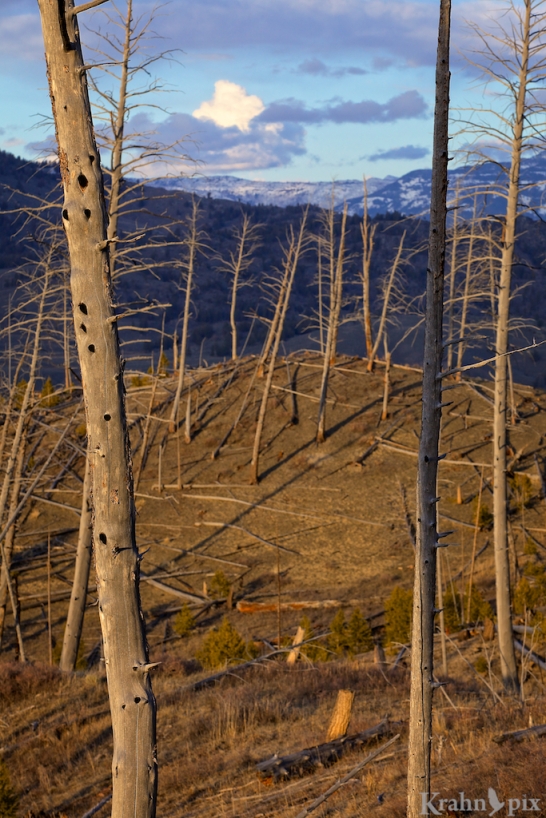
Tree snags can sometimes remain standing for 50 years after a fire has gone through the area. The stories they could tell …
When we entered the park, they told us they had a policy of generally letting fires burn. However, the extremely dry summer fuelling large fires had forced them to switch tactics.
We spent our time looking at heavy smoke instead of gorgeous vistas, cleaning ashes off our tent in the morning and enduring sore throats from the smoky air. Two days was more than enough and we left for cleaner air.
The fire season turned out to be the worst in hundreds of years. Before snowfall finally extinguished the last smoldering embers, a total of 793,880 acres (3,213 km2), or 36 percent of Yellowstone was affected by fire including tens of millions of trees. About 25,000 people helped fight the fires and the total firefighting cost was $230 million in today’s dollars.
The whole experience peaked my interest in fires. I learned more about the many benefits including expanded wildlife habitats for animals like bears and rejuvenated forests. I also learned it was part of the natural cycle of life. It took some time but the park went back to their policy of allowing fires to burn unless people or buildings were at risk.
Twenty-five years later, we returned to Yellowstone this spring. We clearly remembered the fire and noticed plenty of evidence from that traumatic era and subsequent fires. We saw burned trees but we also saw new growth.
Seeing it all cemented a complete change in my thinking. Fire was not the end of the beauty in the forest or the start of a long delay before it returned. Fire created an opportunity to look for different kinds of beauty in burned-out areas. There is something appealing about a landscape in transformation.
The story of a wild forest doesn’t stop when the fires are raging. It keeps unfolding. It reminds me of a quote by Orson Welles, “If you want a happy ending, that depends, of course, on where you stop your story.”
The forest’s stories are still unfolding, just as they should.
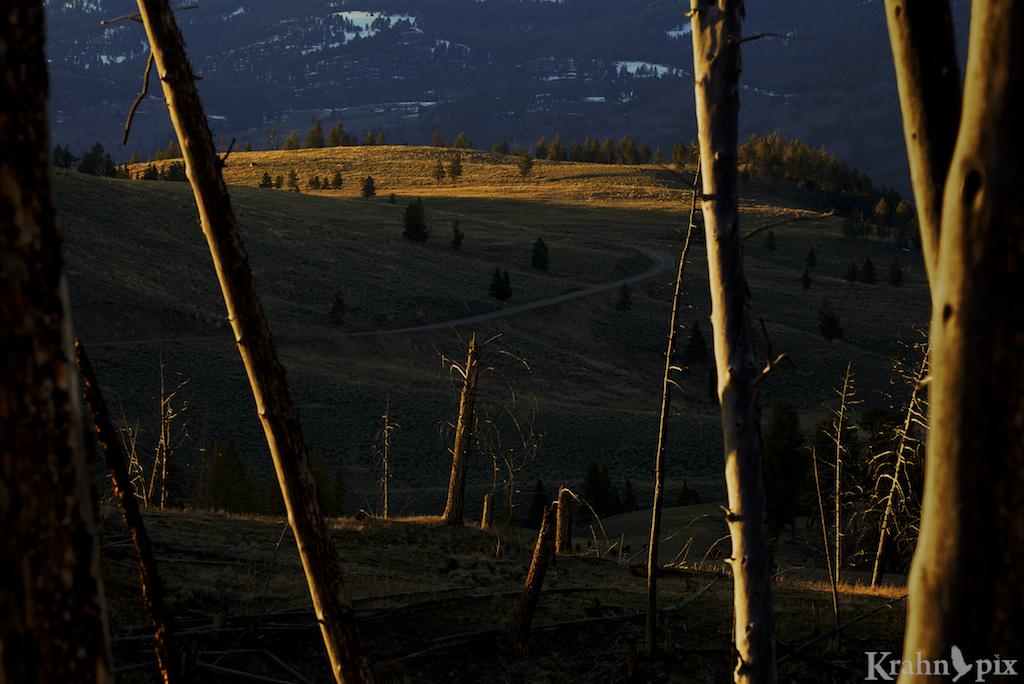
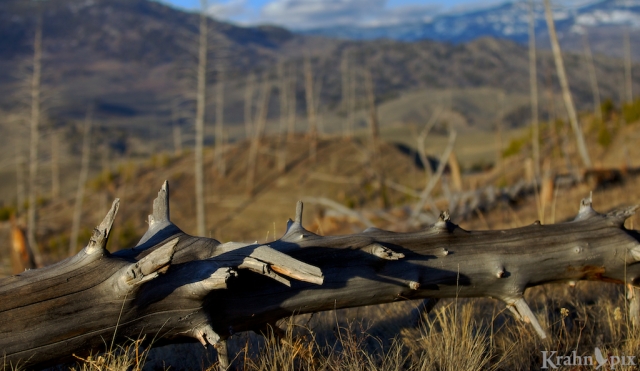
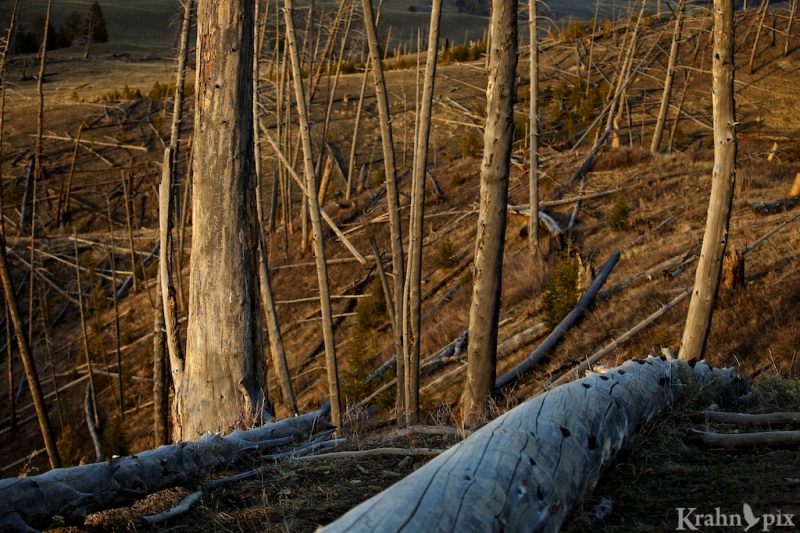
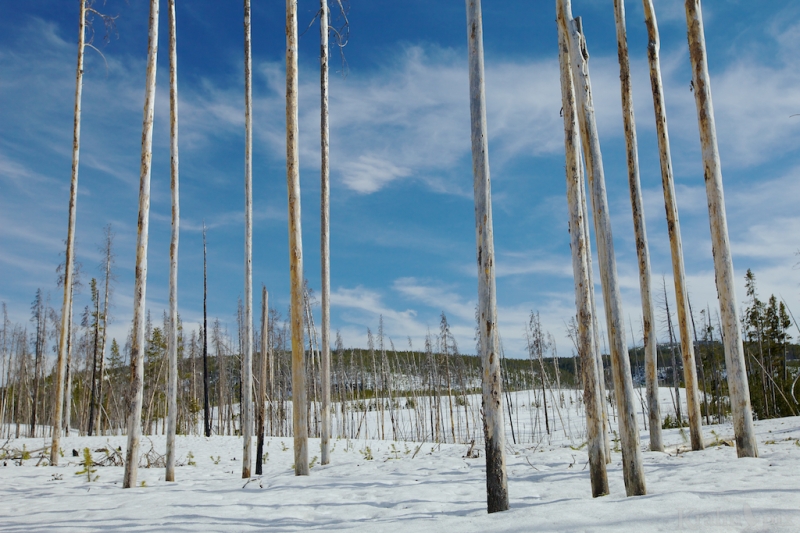
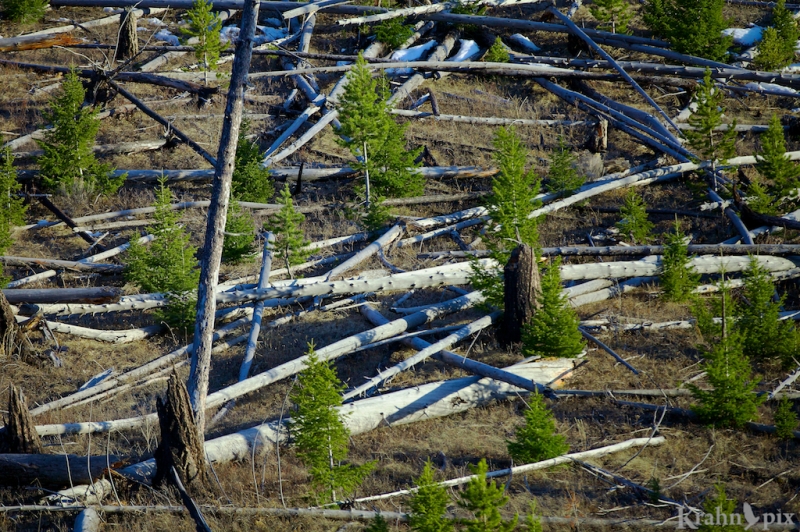


We have a strange relationship with fire, that’s for sure. It is as part of nature as a rainstorm is. Love the trees in the thin snow.
LikeLike
Thanks. Strange relationship is a great way to describe it. That trees in the snow was one I couldn’t drive by.
LikeLike
Nature always finds a way.
LikeLike
So true
LikeLike
Great pictures, I especially love the one with snow! 🙂 Never seen a forest fire (or traces thereof), interesting post!
LikeLike
Thanks. The scene with the snow was so bright, it was hard not to squint. Well once again I took my personal experience and made assumptions. After seeing so many areas affected by fire, it never occurred to me that readers wouldn’t have been exposed to that. But obviously that was wrong. I’m happy to share something you haven’t seen.
LikeLike
I like to see the new growth that follows a fire. There is a large area near Yosemite that is slowly regenerating.
LikeLike
It’s fascinating to see how quickly the new growth starts and then how long it takes.
LikeLike
Fascinating post, Lyle, and beautiful photos. Here in Virginia, forest fires are not something we think much about. It’s interesting to think about fires as part of a process of transformation and renewal (and I really liked the Welles’ quotation).
LikeLike
Thanks. As soon as I found that quote, I knew I had to use it somewhere. My opinions of fires have certainly been through their own transformation over the years.
LikeLike
We cancelled our trip to the Tetons in the summer of 1988 because of the Yellowstone fire. Your starkly beautiful photos capture a silver lining to that story which in a burned over forest probably never really has an ending….or a beginning for that matter! Thanks for another thought-provoking post, Lyle.
LikeLike
Glad you liked it. I found it interesting that you also had a personal connection to that fire.
LikeLike
Very nice. Fire is an important part of the natural cycle here in Florida. Controlled burns are a common event. In our subtropical climate, it is truly stunning how quickly things come back. In just 3 weeks the saw palmettos sprout and it looks fairly green within a month. In contrast, family in Alaska had a fire burn nearby and it takes decades to get the same kind of growth in a cold climate.
LikeLike
That really is amazing when you think about it. The same force but the cycles and regrowth patterns are so different.
LikeLike
Thanks for helping us see those lights and hues, and opening your shutters to share the views.
LikeLike
Thanks for the rhyming comment!
LikeLike